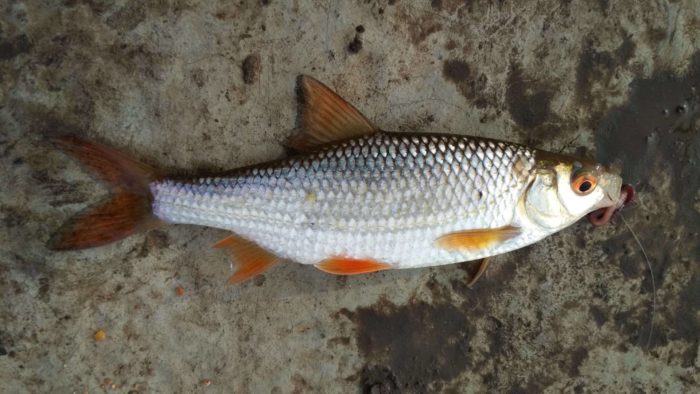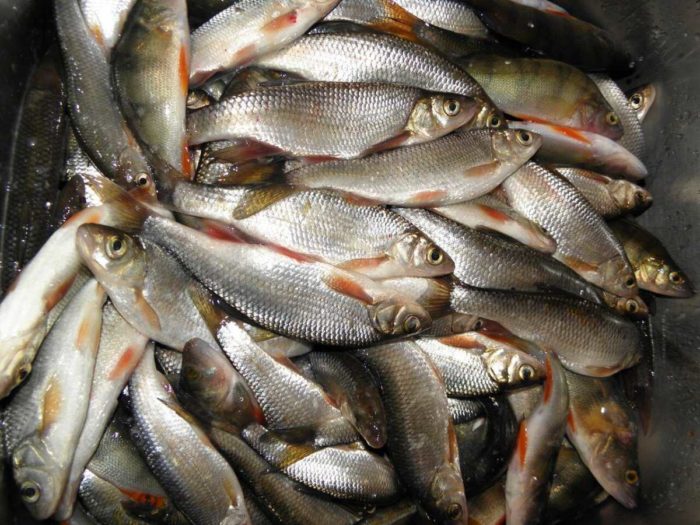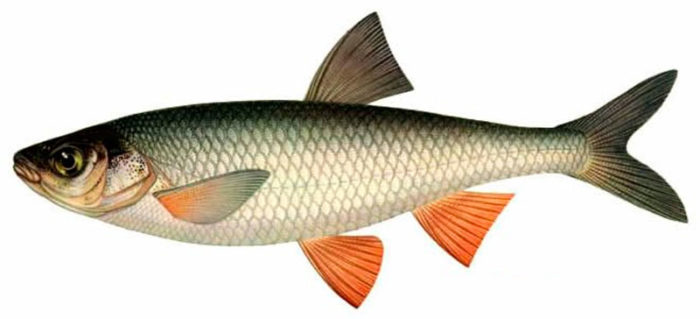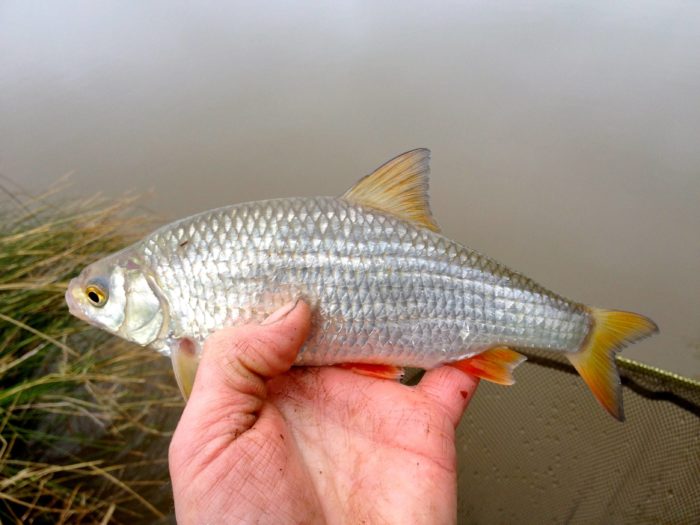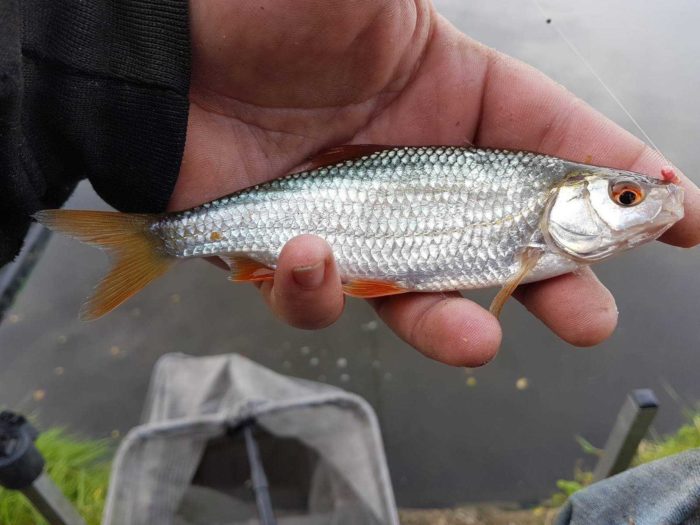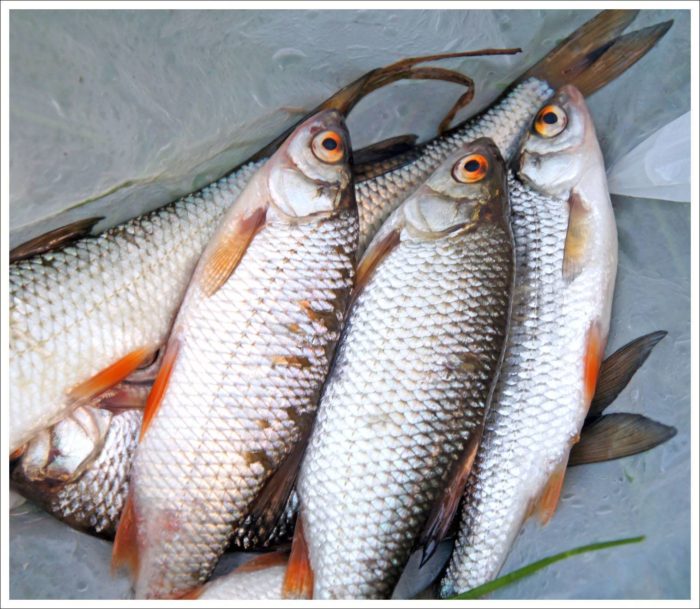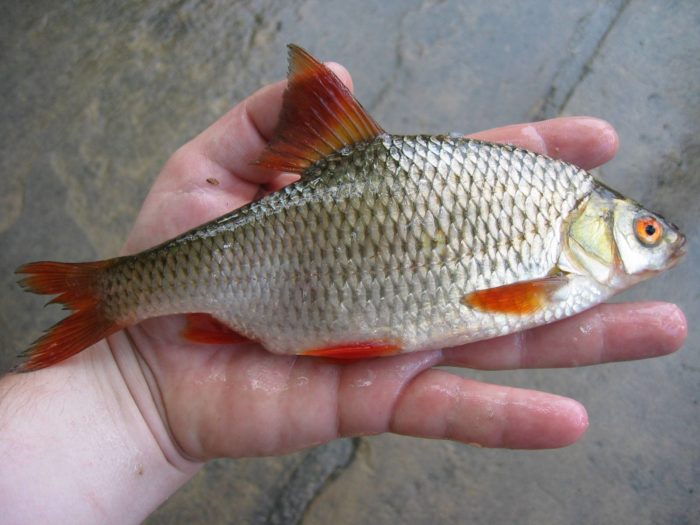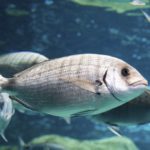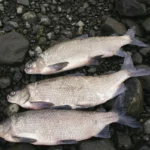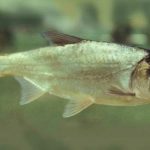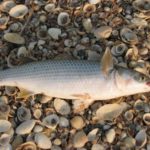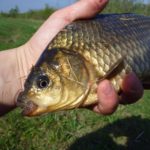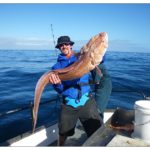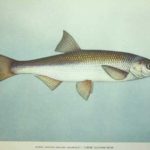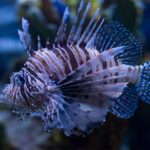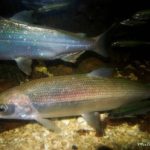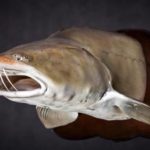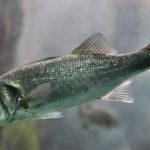People often wonder what kind of fish a chebak is. It belongs to the Carp family and is found in fresh water reservoirs. This individual mainly lives in Siberian rivers and the Urals. Chebak meat has excellent taste and is perfect for frying. However, to successfully catch this fish, you need to take into account a number of nuances - choose the right place and gear.
Description
Chebak is a subspecies of roach. That is why it is often called the Siberian roach.This fish belongs to the Carp family and is mainly found in Siberian and Ural reservoirs. It is considered interesting that of all the varieties of roach, only chebak is produced on an industrial scale. This is due to its active growth and reproduction.
Appearance
Previously, this fish was also called chabak. This type of roach is characterized by a high body covered with large scales. It has a short head and a high fin with many rays.
The back of the chebak is predominantly bluish or green in color. The sides have a bright silver tint. This individual is characterized by bright red or orange fins. The eyes also have an orange tint.
Despite its active development, the chebak reaches a maximum length of 40 centimeters. Moreover, its maximum weight does not exceed 900 grams.
Habitat
Like other types of roach, chebak is found in fresh water bodies. It is found in rivers, ponds, large lakes and reservoirs. In almost all reservoirs that the chebak inhabits, this fish is considered the most numerous. In Russia, it lives in Siberian and Ural rivers. This fish can be found in Kolyma, Irtysh, Tobol. There is one in Indigirka, Chikoy, Khilok. This type of roach is also found in the Ural, Siberian and Far Eastern lakes.
Diet
Chebak is considered to be the most voracious and omnivorous species of roach. This contributes to its rapid growth and reproduction of offspring. The diet of these individuals includes plant and animal foods. They eat worms, shellfish, and algae. The chebak also feeds on bottom organisms and crustaceans. It eats the eggs of other fish and insect larvae.
In the summer, the chebak rises to the surface. There beetles, midges, and small grasshoppers become its prey.Also near the surface of the water, the chebak absorbs flies and mosquitoes. In calm weather, this fish eats constantly. The excessive appetite of the chebak reduces the food reserves of the reservoir. As a result, other inhabitants experience nutritional deficiencies and their populations decline.
Natural enemies
Chebak has a fairly long lifespan, reaching 10 years. However, fish usually do not live to this age. This is prevented by predatory fish and birds. The roach is small in size, and therefore attracts predators. This is also facilitated by the fact that the fish gather in schools and feed near the surface of the water. The hunt for chebak is carried out by pike, pike perch, and perch. At the same time, the greatest danger comes from eels, which love to feast on the eggs of Siberian roach.
Among the birds, the chebaks are consumed by cormorants, herons, and kingfishers. Grebes also prey on this fish. In addition, such individuals are often caught by otters, minks and muskrats.
Reproduction and spawning
Chebak begins to lay eggs at 3-5 years old, when it reaches 10 centimeters in length. The process of fish reproduction begins in May, when the water warms up to +8 degrees. At this time, individuals form small flocks and begin to lay eggs. Usually the Siberian roach does this at a depth of 2-10 meters - it all depends on the weather. The lower the air temperature, the deeper the fish lays its eggs.
The chebak is considered a productive individual, since the female is capable of laying up to 10 thousand eggs at a time. After this, the fish descends to depth. There she regains her strength by absorbing a lot of algae and shellfish. After approximately 2 weeks, fry emerge from the eggs.
Security status
The Siberian roach is considered a fertile individual that develops quickly. Therefore, its population in reservoirs is very large.This makes it possible to catch individuals for industrial purposes. However, they are of low value. In addition, fishing is often considered a forced measure aimed at reducing the population. This makes it possible not to leave noble representatives of the family and other rare individuals without food.
Even in the case of artificial breeding of carp and stocking of reservoirs with fish, voracious chebaks prevent the survival of the fry. In places where there is an abundance of roach, water bodies are overgrown with algae and other vegetation. That’s why networks are sometimes allowed to be installed in such zones. However, in such situations, fish can only be taken of specific sizes.
About fishing for chebak
The Siberian roach does not attract too much interest among fishermen. In gastronomic terms, it is considered quite mediocre. Anglers are more attracted to the fishing process itself. He is quite fascinating. At the same time, the fish bite consistently and are caught well.
Since the chebak is considered an omnivore, it is worth using plant and animal baits. In this case, it is permissible to use a regular float fishing rod, which has a light float and thin fishing line.
Chebak can be caught throughout the year. However, spring is considered the most suitable time. At this time, the fish gains weight in 1.5 weeks as it prepares for spawning. At the same time, you can lure it using any bait.
After the end of spawning, which occurs in June, fishing is also successful. This usually lasts 15-20 days. During the recovery period after spawning, it is recommended to catch fish early in the morning or late in the evening. Another favorable season for catching chebak is autumn - before the arrival of frost. At this time, the fish prepares for winter and increases its mass. It is recommended to use animal bait.
When choosing a fishing time, you also need to take into account weather conditions. To catch a large specimen, it is recommended to do this in cloudy weather.
Selecting a location
Chebak lives in a wide variety of water areas. At the same time, many anglers say that this fish is best caught in shallow water with an abundance of aquatic vegetation. In addition, these individuals are found near rifts. In other words, the chebak can live anywhere – in places with maximum accumulation of food.
To attract fish to the fishing site, it is permissible to use bait of any origin - purchased or homemade. To prepare the bait yourself, you should take pearl barley. With its help, it will be possible to collect entire schools of fish in the fishing area.
What gear to prepare
To catch roach, it is permissible to use float or bottom gear. Spinning rods with a small spinner are also suitable for this. Most often, insects or their larvae, boiled cereals, maggots and worms are placed on the hook. It is also permissible to use duck or chicken intestines as bait. Steamed peas would be a good option. To make fishing more successful, it is worth adding a flavor to the bait. Chebak accepts garlic well.
When choosing gear, consider the following:
- For spinning, it is recommended to use a small spoon or small spinning tackle.
- When using a donkey, you should attach bloodworms, jigs or bread balls to the hook.
- Donka or feeder is used at dusk or in cold weather. In such conditions, the fish prefers to go to the bottom.
Before you start fishing, you should feed the place. For this, it is recommended to use porridge, bread, cake, bran. At the same time, it is important to give up complementary foods more often, in small portions. This is done at intervals of 2-3 minutes. Roach is considered a timid fish.Rather, she is very curious and perceives the splash with interest.
When fishing for chebak, it is recommended to follow the following rules:
- In muddy water, it is worth using green, golden or bright yellow bait.
- Fish will bite better on a silver spinning bait if you put pink dots on it.
- When using a spinning rod with a light rod, you should use an oscillating spoon. A small spinner on a light rod will also work.
- The fishing line should not be thicker than 0.14 millimeters. It is also worth using a sensitive float and a weak sinker.
- To catch large fish, it is recommended to use a 4 meter long feeder rod.
- In winter, it is recommended to use classic tackle with a reel and a sensitive nod. When choosing a jig, you should give preference to light round tackle in a yellow, white or pink shade. The fishing line should be ultra-thin - 0.07-0.1 millimeters. In case of strong currents, it is worth taking thicker tackle – 0.15 millimeters.
When catching chebak with a float rod, it is recommended to consider the following:
- It is best to use a Bolognese rod measuring 4-7 meters. It can be supplemented with a lightweight inertial coil, but you can do without it. A sliding float weighing 1-4 grams would be a suitable option.
- Chebak is considered a voracious fish, but does not like all baits. To make fishing effective, you should try different baits. This is due to the fact that fish constantly change their preferences. One day the chebak bites excellently on maggots, on another – on corn or dough.
- A fish caught on a hook is quite easy to pull out. Despite the fact that the chebak is considered a lively individual, it is small in size and quickly loses strength.
- To prevent the fish from becoming entangled in the grass or under snags, it must be fished out without giving up any slack.
About fish meat
Chebak is a tasty fish that contains a minimum of fat. People who live in the habitats of this species consume this product constantly. However, the abundance of bones in the fillet causes some discomfort.
This product is considered non-caloric. There are 88 kilocalories in 100 grams of fillet. This feature allows the product to be used in the preparation of a diet. 100 grams of chebak meat contain 17.5 grams of protein and only 2 grams of fat.
This product contains chromium, fluorine and vitamin PP. Fish also contains fatty acids and protein, which is easily digestible. With the systematic use of this product, the following results can be obtained:
- strengthen hair and nails;
- saturate the body with valuable substances;
- improve the appearance of the skin;
- increase visual acuity;
- reduce the likelihood of age-related memory decline;
- increase vascular tone and improve heart function.
It is important to take into account that the chebak is capable of transmitting diseases and parasites, and is therefore potentially dangerous to health. To avoid infection, it is important to carefully select carcasses in the store and ensure complete heat treatment during cooking.
Hot smoked chebak can accumulate dangerous carcinogens. Therefore, the amount of such a product in your diet needs to be limited. Fish fillets contain many small bones, which makes eating uncomfortable and can be harmful. In addition, people with individual intolerance should avoid this product.
Compliance with storage conditions is of no small importance.Fresh fish must be completely cleaned and placed in the freezer for several days. This will help deal with germs. Dried chebak has a longer shelf life. However, it is recommended to keep it at a temperature from -18 to +15 degrees. In this case, the humidity parameters should be no more than 75-80%. It is important to use packaging that protects the fish from the sun.
To prevent frozen carcasses from drying out, vacuum packaging is required. They can lie for up to 3 months at a temperature of +15-20 degrees. This product can be stored in the freezer for 1 year.
It is also permissible to keep fish in brine. This product must be stored at low temperatures. In this case, the container should be tightly closed to avoid the penetration of microbes.
In a suspended state, chebak is well stored in a ventilated room. To protect the product from insects, it needs to be wrapped in several layers of fine mesh material. The optimal humidity parameters in this case are 80-90%.
You can also roll dried fish into glass jars. It is important to fill the container tightly to avoid the carcasses falling out. You need to insert a wax candle into the middle of the jar. In this case, the wick must be placed 3 centimeters from the neck. You need to light the candle, cover the jar with a lid and roll it up. When there is no more oxygen left inside, the candle will go out. In the resulting vacuum, the fish can be kept even at room temperature.
The correct choice of fish is of no small importance. A fresh chebak has clear and clean eyes. In stale fish they become cloudy. When choosing a product, you should pay attention to the appearance of the carcass.You should not buy fish with spots that are a sign of disease. The gills of fresh produce should be bright pink and free of gray or black stripes. If they emit an unpleasant odor, the product is clearly spoiled.
Fresh carcasses should quickly regain their shape after pressure. Indentations from fingers remain on spoiled product. It is also worth paying attention to the fins. Subject to storage conditions, they remain intact. If the fins are torn, it means the shelf life has expired.
Use in cooking
There are many recipes for making chebak. If you follow the recommendations of experienced chefs, you will be able to preserve the properties and taste of the product. The most popular cooking methods include the following:
- Fried chebak. To prepare this dish, you need to clean the fish from scales and entrails, and remove the gills. Then you need to sprinkle the product with salt and pepper, coat it with beaten egg and place it on a hot frying pan. Then you need to fry the onions and add to the fish.
- Baked chebak in the oven. Cleaned and gutted fish should be immersed in a marinating container and coated with chopped garlic. Sprinkle the product with salt and stir. You also need to add lemon juice and fish seasoning. Leave the fish for half an hour, wrap in foil, place on a baking sheet and place in a preheated oven. Bake at 150 degrees for half an hour.
- Dried chebak. There is no need to clean or gut the fish before drying it. First, you need to freeze the carcasses for several days, then lay the fish in layers in a deep container and cover with salt. Leave for 2 hours, then apply pressure and hold for the same amount of time. After this, you need to remove the salt and hang the fish on the balcony or in another well-ventilated place.When the back becomes hard, the product can be eaten.
Chebak is a fairly useful fish, which is widespread in fresh water bodies. This product contains many valuable components, which is why it is actively used in cooking.

